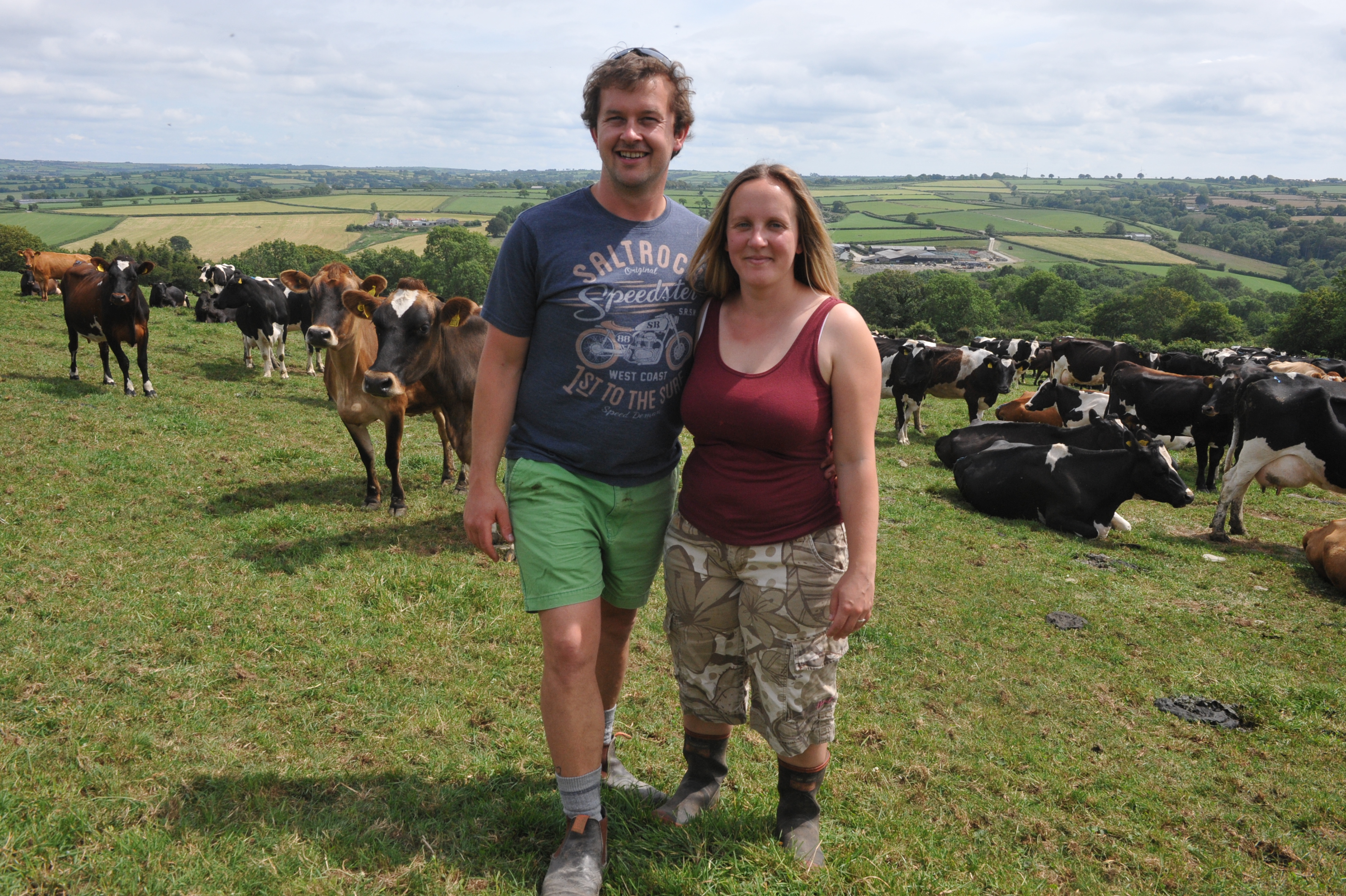Overheads key to driving farm performance
Monday, 22 February 2021
Reducing overheads is critical for farm profitability and a key focus for Dylan and Hannah Harries who run Tyddyn yr Eglwys farm in West Wales. They aim to maximise cash out of the business whilst maintaining job satisfaction and quality of life for the whole farm team.
Reducing costs of production, getting the most from recent infrastructure investments and making business decisions that positively impact profitability are key areas of focus for this spring calving Pembrokeshire farm.
Dylan and Hannah also aim to keep overheads cost as low as possible and passionately believe it’s vital to every farm’s success in the future:
“Every 1ppl saved equates to £30,000 annually for a 3 million litre producer like us so it really is worth chasing even the smallest of savings. You need to be extremely efficient in modern dairy farming. It’s not as though our quest for efficiency means that we are making lots of money – we have to be efficient just to stay in business.”
Feed, machinery and housing costs
Feed costs are kept low by using self-feed silage pits and favourable weather conditions in 2019 reduced the need for feeding out in the summer. An increase in milk volume output helped to dilute overheads.
5Ha of Kale is being grown as a trial to feed during the calving period. Even if it only meets a small proportion of demand, they hope it will reduce pressure on silage, housing and slurry storage.
The kale was planted in a field that needed re-seeding and light cultivation after strip grazing should allow it to be re-sown with a herbal ley as a catch crop this spring. This should fill the feed-gap which the farm often experiences in June/July.
The Harries investment in housing, including new parlour infrastructure, caused building depreciation costs to increase in 2019. However, they avoid keeping too much machinery to reduce depreciation and repairs, both of which feed into overhead costs.
They own one tractor, a skidsteer, quad bike, fertiliser spinner and an 80-teat trailed calf feeder. Dylan says he tries to keep good equipment which is reliable and fit for purpose to keep running costs low.
Find out more about Tyddyn yr Eglwys
Adopting lean management techniques
Labour efficiency is also key. Hannah works reduced hours after the birth of their second child, so they decided to manage on a short-term basis rather than temporarily replacing her. The experience highlighted how important it is to have good systems in place and a team who know their roles but can be flexible.
Dylan looked at ways to increase efficiency by working with Jana Hocken a Lean management specialist and dairy farmer from New Zealand.
They trialled using one person to milk the 550 cows through the 50:100 swing over parlour to free up a labour unit during milking for other tasks.
Milking was filmed and speed analysed to see how people moved in the parlour. The aim was to find ways to reduce step counts, reduce fatigue and improve proficiency.
When Jana suggested the idea, Dylan felt that this would make one of the most vital tasks on farm long and exhausting. The results showed that whilst it increased the length of time it took to milk; it drastically reduced total man-hours spent milking.
The team will, however, keep two people milking as maintaining job satisfaction is vital and Dylan is keen not to exhaust people with long solo milking periods. The experience has empowered him to consider using just one person on the shoulders of the season or during particularly busy or short-staffed periods.
Watch Dylan's Lean management webinar with Jana Hocken
A team approach
Information boards are displayed in the communal team areas to help everyone understand what is expected and how the farm is performing.
In addition to weekly tasks, the boards show fertility and milk output targets alongside other KPIs. They also display grazing and paddock management plans, plus safety incidents or near misses following a switch from paper records after a short trial.
A new supply ordering system has been introduced to reduce waste over the next few months. Labels highlight when products, such as medicine supplies or dairy chemicals, approach low levels and alert the person responsible to order and replenish stocks. This should help stop unplanned journeys for emergency supplies, reduce staff stress and further reduce overheads.
Having a tight management of all machinery, infrastructure investments and feed costs are key components to achieve healthy overhead costs. Dylan and Hannah’s approach shows that a deeper analysis of your processes, systems of delivery, staff communications and waste can play a critical part in reducing your overheads.
Overhead costs
Defined as the overheads of the herd, including dairy replacements but excluding rent and finance, overhead costs are one of the largest sources of variation in the cost of production.
Labour, power and machinery are all inter-related, so it is important to measure overheads and compare with the best performing farmers. This helps identify areas for improvement and enables you to set targets to lower your cost base.
The full economic cost of production of a litre of milk at Tyddyn yr Eglwys for the 2019 season was 23.9ppl, placing them in the top 5% of producers.
Tyddyn yr Eglwys’s overheads cost is currently 11.5 ppl, which according to our key performance indicator benchmarks represents an above average performance.
See Tyddyn yr Eglwys's other KPIs
Related content


